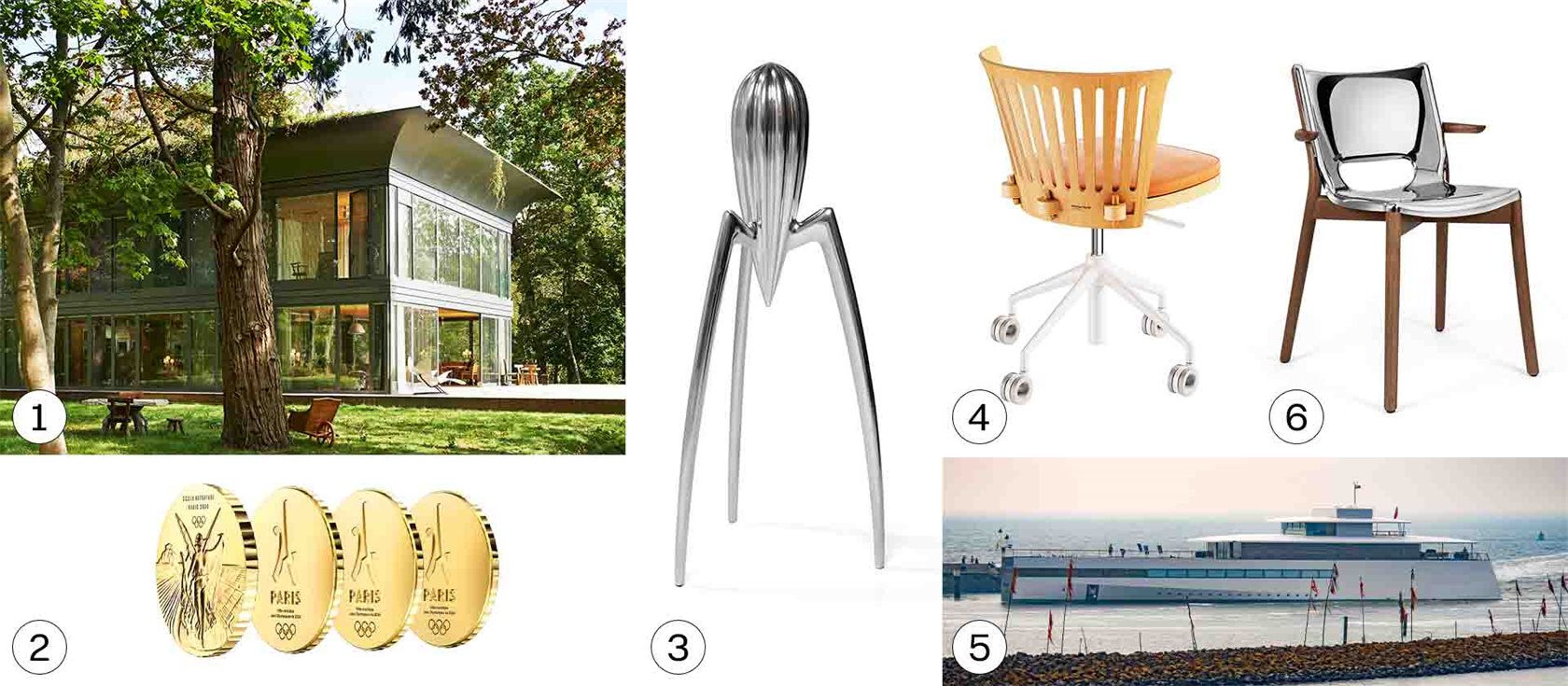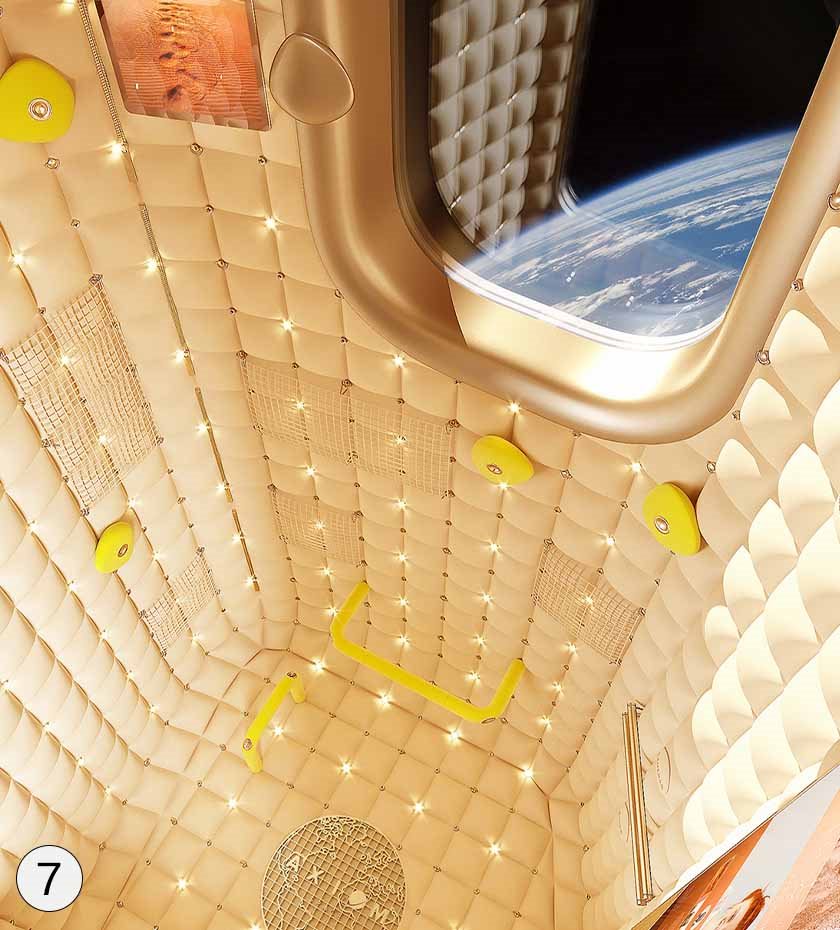Star Designer - Philippe Starck

It's simple in its design language. Very simple. In fact, Philippe Starck's latest furniture line consists of just two or three pieces of plywood assembled without the use of glue or screws. The chairs are solely put together using wooden wedges.
"For years, I have worked with plastic, with aluminum, with high-tech materials and I realized it was not enough. We need some nature also. But I love trees – and when you say nature, when you say wood, that means killing wood. And that I cannot do. That’s why I almost never made something in wood because it was all solid wood – until Charles Eames. I remember Eames would make things in plywood and it was very, very interesting." , says Philippe Starck.
And it’s only an advantage that it's a cheap material that can be produced ecologically and sustainably.
These are factors that speak directly to the design philosophies that the now 74-year-old Philippe Starck has been working with for more than 50 years: his design solutions should be accessible to ordinary people, they should be democratic, and preferably with a twist, a bit of humor and, above all, serve a purpose.
His new furniture series, created for the Spanish furniture company Andreu World, is a study in minimalism. At the same time, it’s Starck's attempt to create ecologically sustainable, democratic and affordable furniture.
“I wanted discernable structures that we can see, that we can understand, that we can build without nails, without screws, without glue. Furniture that is simply assembled with an intelligent interlocking of the different elements. Like a three-dimensional chess game. Nothing superfluous. Just like the future."

The political element of Starck's new collection is not limited to the ecological aspect. The collection consists of ten new designs, all of which have been given names inspired by Ukrainian first names, such as Mariya, Petro, Olena, Maksim, Polina, Tamara, Luba, Nazar, Alla and Taras.
All things considered, Philippe Starck hasn't completely turned away from the use of metal in his furniture design. But wood is part of his latest design. In many ways a first for the Italian design company Alessi, not previously known for producing furniture. But Starck has designed a beautiful chair with beech wood legs and a cold-pressed stainless steel shell that is almost reminiscent of a frying pan. The chair was presented to the public at the Salone del Mobile 2023 design fair in Milan in April.
Starck's design philosophy
“Subversive, ethical, ecological, political, humorous… this is how I see my duty as a designer." Where the subversive element lies is perhaps a bit uncertain. But humor is definitely one of the things that many people associate with French master designer Philippe Starck. Who doesn't remember his iconic citrus juicer, which with its long, spindly legs looks like something out of Star Wars. It may not be the most efficient citrus juicer on the market, but it is fun and serves its decorative purpose in any kitchen.

Ethical, ecological and political design is something Philippe Starck has mastered time and time again. Just look at his design series Good Goods.
“With Goods Goods catalogue, I tried to find, collect, correct or create honest, sustainable and respectful objects. Objects that are good before being beautiful, in a catalogue that I like to call a "catalogue of non-products for non-consumers of the future moral market.”, says Philippe Starck about the series, which includes everything from teddy bears with finger puppets to knives and forks for the dinner table. The Good Goods series also includes clothing, furniture and motorcycles.
Philippe Starck's designs are diverse. There is hardly an element of modern consumer society for which he has not developed new and exciting designs. Although well-known designer products are usually not the most affordable in the world, he has, from his first designs, tried to enforce a democratic principle in his work: good design should be creative and be produced at prices that make the products accessible to as many people as possible.
But with 10,000 different designs to his credit, it is not always possible to enforce such rigorous principles to perfection. If not, he would hardly have taken on the task of designing and developing a yacht for Apple founder Steve Jobs. A 78-meter-long ship with room for 12 passengers and a crew of 22. That's hardly sustainable. Some might even question the ethics of building a nearly $100 million yacht for one man.
But this isn't the only time Starck has ventured into the lucrative business of luxury boat building. Russian multi-millionaire Andrey Melnichencko has also spent hundreds of millions to have not one, but two superyachts built by Philippe Starck. His fleet consists of Motor Yacht A and Sailing Yacht A. Two yachts with price tags of $300-400 million each.
Philippe Starck's first works as a designer were completed in the late 70s, when he designed the Parisian nightclubs La Main Bleu and Les Bains-Douches. But his stardom really took off when then French President François Mitterand hired Philippe Starck to reimagine and redesign the presidential residence at the Élysée Palace.
Since then, Starck has been responsible for building and designing everything from hotels, restaurants and nightclubs to shops, private homes, museums and even wine cellars. All with their own distinct expression.
Starck in space
With thousands of more or less down-to-earth design solutions, it's hardly surprising that Philippe Starck has looked to the stars for new challenges. Literally. In 2016, commercial aerospace company Axion Space hired the French super designer to create a habitation module for their upcoming space station. The result was a typical Starck design: a golden chamber with walls covered in tufted upholstery, high-speed wifi connections, high-end audio and visual systems and hundreds of color-changing LED lights. And, of course, a 24-inch window so that the beauty of the globe can be viewed in its entirety.
Moving into space is perhaps not so foreign to Philippe Starck. His father was an aeronautical engineer with a strong interest in space travel. So, the dream of a charter trip to the upper reaches of the sky is hardly new to the famous designer.
This is perhaps not the most democratic aspect of Starck's career. A 10-day charter trip to the International Space Station (ISS) will cost future space tourists no less than $55 million. The rest of us will have to settle for a futuristic citrus juicer on the kitchen table.
The text is translated by Pernille Kaufmann. See more here